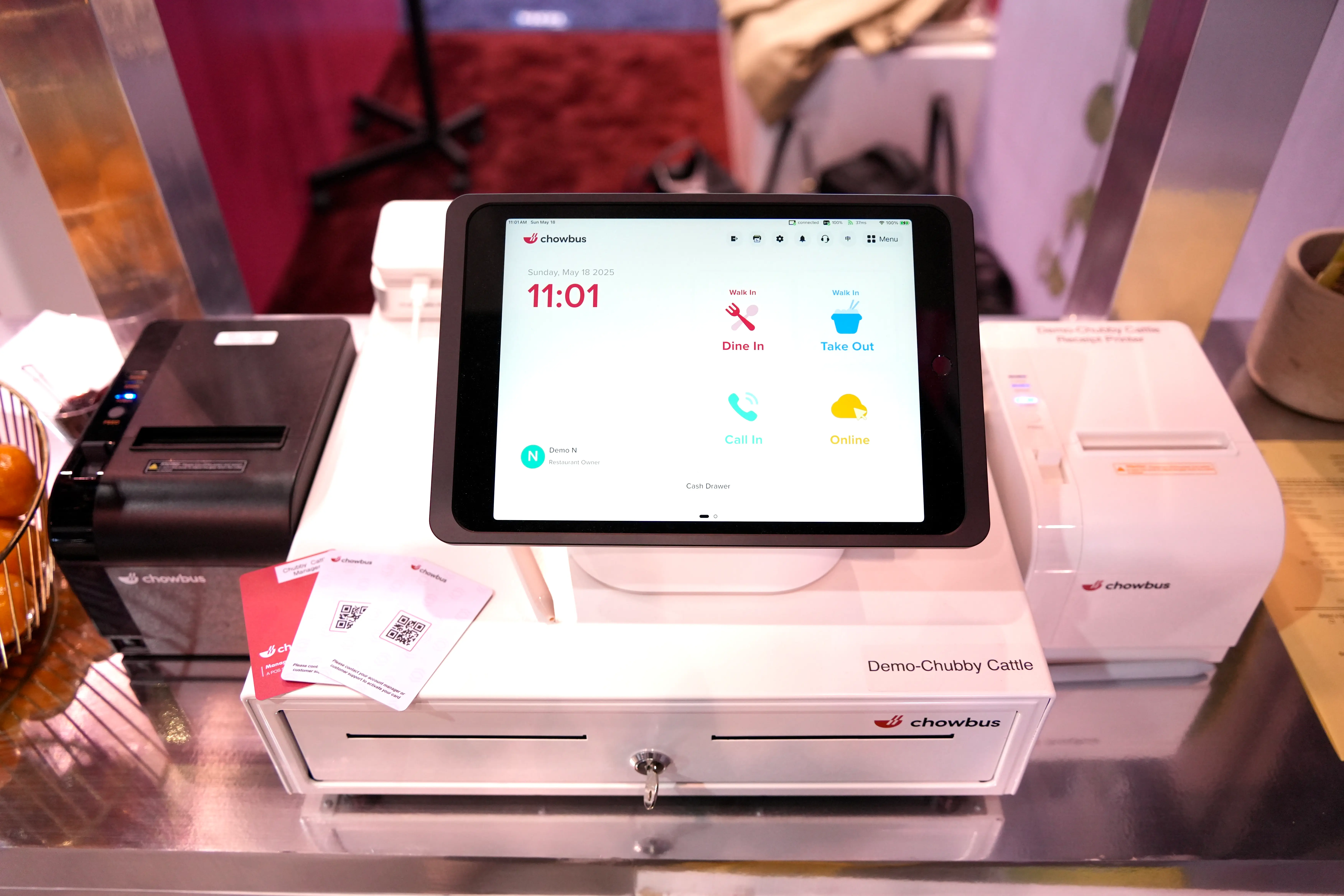
Managing online and in-house orders separately leads to lost time, order errors, and frustrated staff. A POS with online ordering solves that by connecting your website, delivery partners, and kitchen into one system.
If you’re comparing options and trying to figure out what actually works, this guide will help you choose a POS system with online ordering that runs smoothly, scales with your needs, and simplifies every step of the process.

A POS with online ordering means more than just having an online menu. It connects your website, delivery platforms, and physical locations into one system that works together in real-time. Orders placed online should flow directly into your POS and then straight to the kitchen, with no retyping, no delays, and no mix-ups.
When everything syncs automatically, your team can move faster, your customers get what they ordered, and you avoid dropped tickets or double entry during a rush. Here’s what to focus on when evaluating your options:
The moment a customer places an online order, it should appear instantly in your POS and kitchen display system. No delays. No need to manually enter the order or confirm it on a separate tablet. This reduces mistakes and keeps service running smoothly, especially during peak hours.
You should only have to update your digital menu once. A good system links your in-store POS and online ordering menu, so changes reflect everywhere. Whether you're adjusting prices, adding seasonal specials, or pausing items during a rush, your updates should sync without any extra work.
Select a POS that integrates with third-party platforms, such as DoorDash, Uber Eats, or Chinese delivery apps like Fantuan and Hungry Panda. Orders from those platforms should drop directly into your POS, go to the kitchen automatically, and follow the same process as a direct website order. This keeps staff from juggling multiple tablets and speeds up prep time.
Your POS should support both pickup and delivery, allowing you to have full control over order scheduling. Set your own prep times, offer future ordering, and manage delivery radius, minimum order amounts, and free delivery thresholds right from the POS interface.
If you offer a lunch menu, dinner menu, or special promotions, your POS should let you create multiple menus and switch them automatically based on time or day. That way, customers see the right items at the right time without staff needing to make manual changes.
Make checkout fast and easy for customers by accepting credit cards, debit cards, Apple Pay, and other secure payment options. A solid POS also gives you tools to manage payment risks, like blacklists or offline payments when needed.
From browsing to checkout, the entire ordering flow should feel easy for your guests. No redirects. No clunky layouts. Just a clean interface that makes ordering feel simple on both desktop and mobile. When customers find ordering easy, they’re more likely to return.
A POS system with online ordering should work in the background to save time, reduce staff workload, and ensure that every order is more accurate. Focus on how it connects everything together without extra steps. That’s what keeps service moving, even when orders are coming from multiple directions at once.
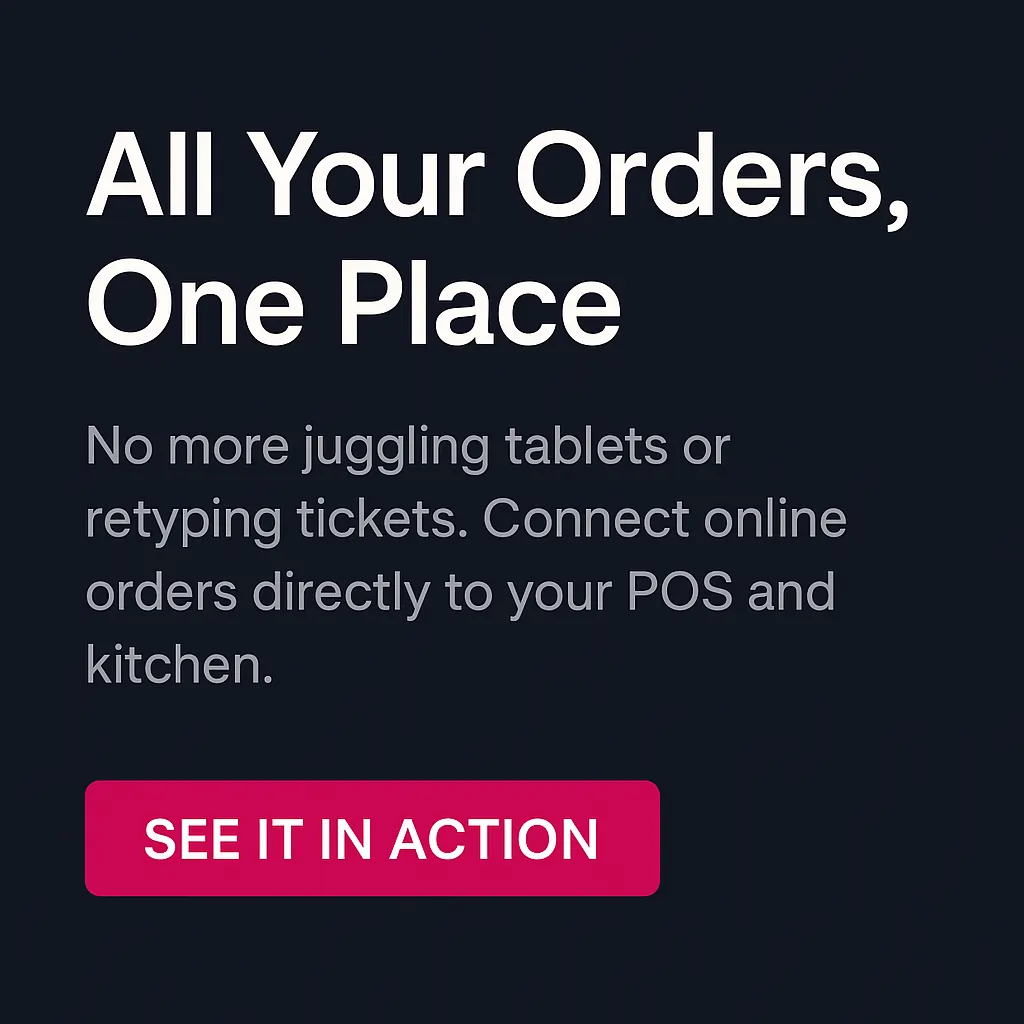
The right POS system with online ordering should match how you operate today and how you plan to grow. Here’s how to focus your decision based on what you actually need.
If you run a busy spot with limited staff, avoid systems that slow you down. Choose a platform that’s quick to learn, easy to update, and doesn’t require constant support to keep it running.
Look for:
If you’re launching a new place, focus on tools that make it easier to scale, not harder. You shouldn’t need to rebuild your setup every time you add a feature.
Look for:
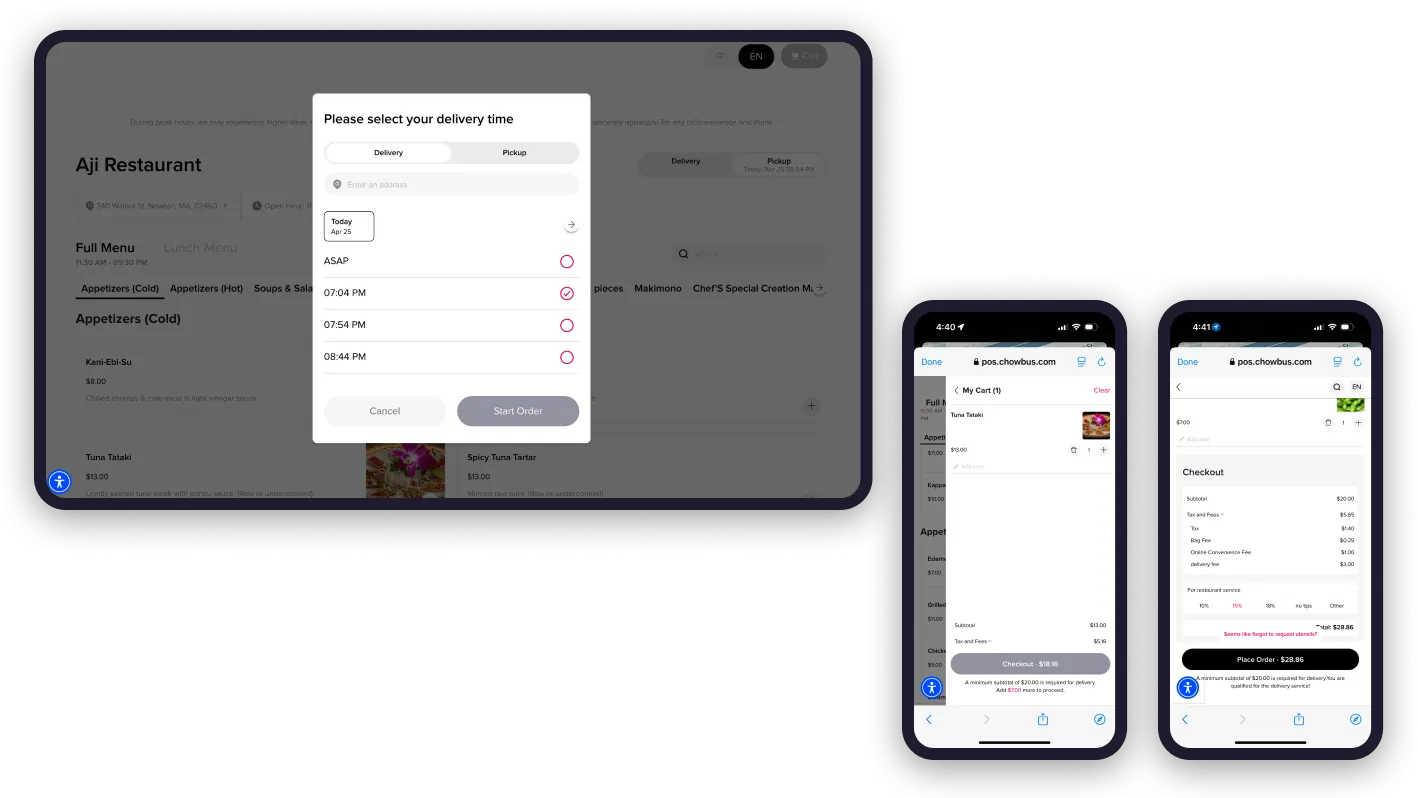
If you manage more than one location, you need everything centralized. Manually updating menus or reports store by store wastes time and leads to errors.
Look for:
Not all systems labeled “integrated” work the same. Some only offer basic connections or need third-party plugins. Others offer true end-to-end syncing.
Test for:
Some systems charge a flat fee. Others take a cut of every order. Know what each option means for your bottom line.
Compare:
When something breaks or needs setup, responsive support can save hours. Ensure you can reach someone who is familiar with the system and can provide quick assistance.
Check for:
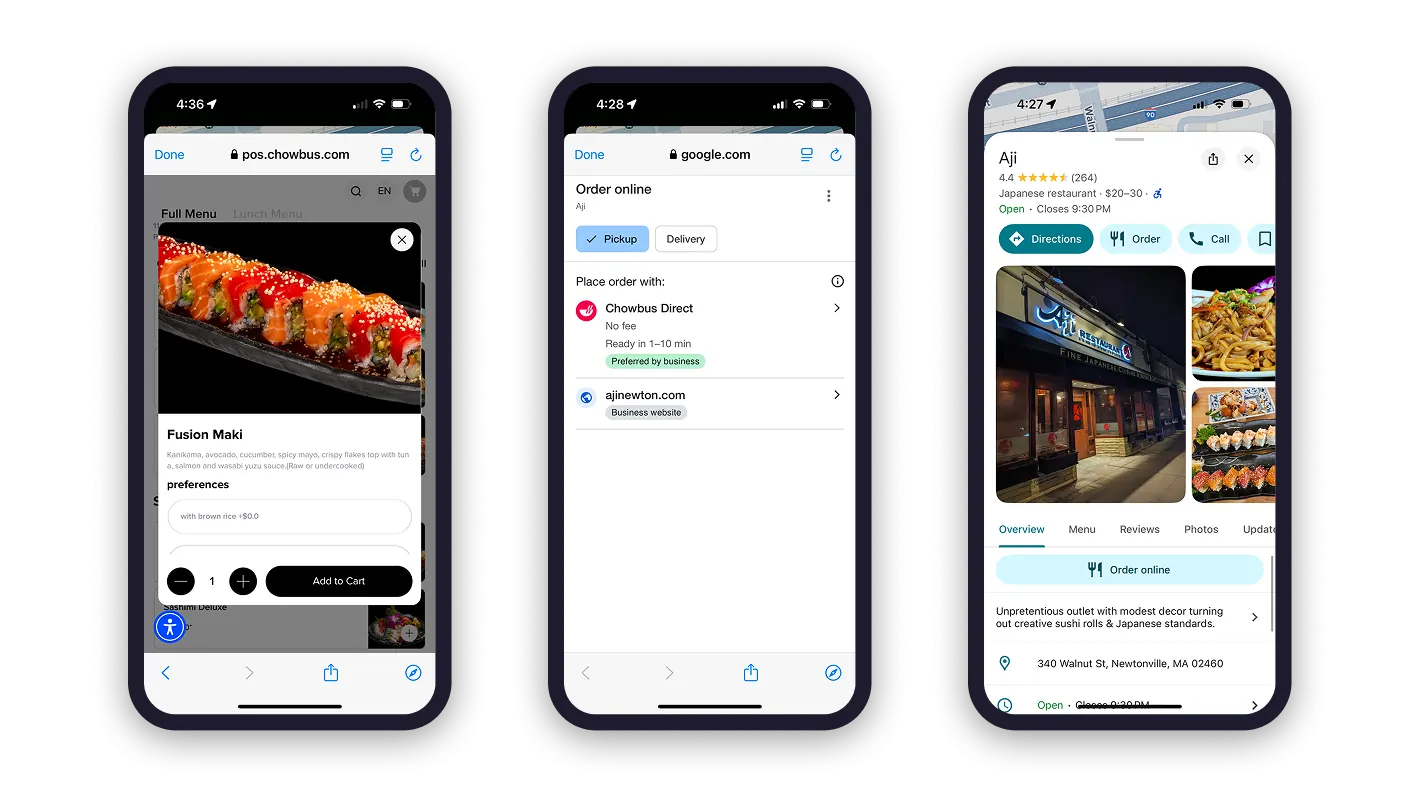
Choosing a POS system can feel overwhelming, especially with so many features being promoted. But some mistakes show up again and again—and they cost time, money, and peace of mind. Here’s what to watch for:
Not all integrations are equal. Some systems say they work with online ordering, but still require your staff to manually re-enter tickets or use a separate tablet for third-party apps. That slows everything down and leads to mistakes. A fully integrated setup should automatically send online orders straight to your POS and kitchen, with no extra steps or hardware.
Before you commit, test how an order flows from the customer to your kitchen. If it doesn’t feel fast and automatic, it’s not truly integrated.
A good product isn’t enough if you can’t get help when you need it. Tech issues during a lunch rush can throw off your entire day. Make sure the provider offers fast, reliable support and clear setup assistance. Look for real people who can walk you through problems, not just a help center article or chatbot.
Also check if they help with things like building your online ordering page, updating your menu, or connecting with Google. Those details make a big difference in how quickly you get value from the system.
It’s tempting to go for the system with every feature available. But if you’re not ready to use them, you’ll just be paying for tools that sit unused. Focus on what helps today, like direct online ordering, kitchen integration, and delivery options.
Look for a system that gives you room to grow, but doesn’t overload you with features that slow your team down or make setup more complicated than it needs to be.
Choosing the right system isn’t just about features. It’s about how everything works together. A POS system with online ordering should keep orders moving, reduce friction between online and in-store channels, and make it easier to focus on service, not screens. The right setup connects your online and in-person operations without adding extra steps, helping you stay efficient as order volume grows.
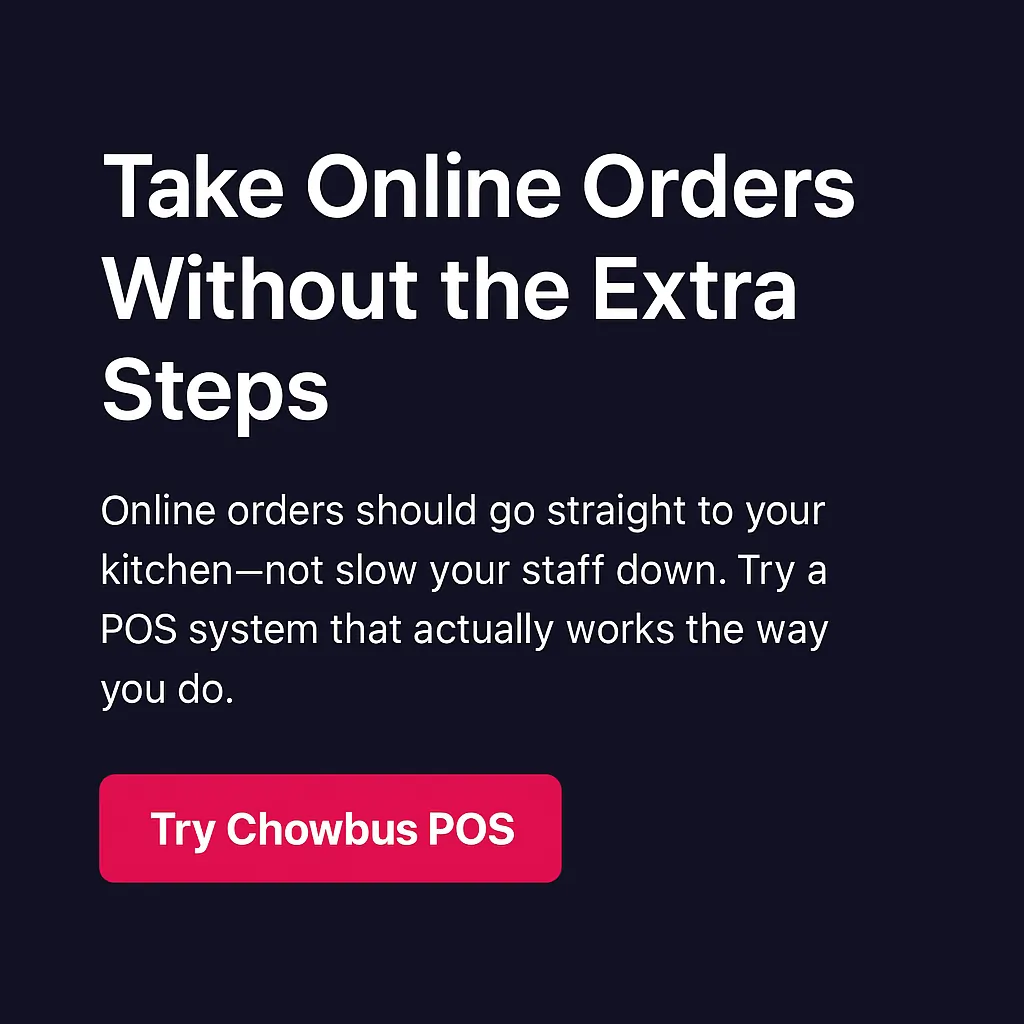
Chowbus POS brings together online ordering, pickup, and delivery tools in one platform designed to simplify restaurant operations. Orders from your site or third-party apps flow directly to your kitchen, menus stay in sync, and updates are easy to manage, all without extra hardware or confusing workarounds.
Book a Free Demo with Chowbus POS today and see how a truly integrated system can support your daily operations and long-term growth.
Got questions about how POS with online ordering actually works? Here are quick, clear answers to help you make smarter decisions faster.
No, you don’t need your own website. Some POS systems offer built-in online ordering pages you can use right away, often hosted on their platform. This lets customers place orders online without requiring you to build or manage a separate site.
Yes, a POS with online ordering should support both pickup and delivery. It should let customers choose their preferred option during checkout and allow you to set rules like delivery zones, order minimums, and scheduling preferences.
Yes, third-party delivery orders can go into the POS automatically if your POS with online ordering supports direct integration. This means orders from platforms like DoorDash or Uber Eats are sent straight to your POS and kitchen without manual entry, saving time and reducing errors.
A POS with online ordering reduces errors by sending customer orders directly to the POS and kitchen display in real time. This removes the need for manual entry, cuts down on miscommunication, and ensures every order is accurate and complete.
A POS with online ordering should support major credit and debit cards, Apple Pay, and contactless payments. Some systems also offer offline payment options and tools to manage risk, like customer blacklists.
A POS system integrated with online ordering drastically cuts manual tasks. It automatically feeds orders directly into your kitchen or fulfillment workflow, eliminating phone calls and manual entry. This slashes staff time spent taking orders and reduces errors. Payments are processed instantly online, streamlining checkout. Staff can then focus faster on preparing orders and serving customers in-house.
Want more insights like this? Check out our blog section for tips, updates, and restaurant tech trends.

Recommended Articles: